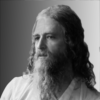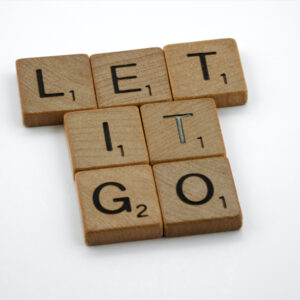There are many, many yoga asanas (postures) which we can explore. I have heard it said that there are some 840,000. Most of us do not practice quite so many; we work with a much smaller set. Asanas are designed to develop the body, harmonize the breath, and bring peace and wisdom to the mind. Asanas are powerful vehicles, and if we approach our yoga with a degree of respect we are sure to reap great benefits. If we use yoga as a stage to parade our self-conceit or our self-deprecation, well, we’ll find the result is a bit less desirable.
Some of you may have seen me hobbling around with a brace on my right knee. When anyone asked why I was bandaged, I’d cheerfully explain that I had injured myself while practicing yoga. After all, it wasn’t like I was uncool and did something clumsy. If they expressed surprise that one could be hurt while practicing a “healing art,” I was happy to brag that my yoga routine was quite advanced. Similar to a competitive athlete in training, I was a serious guy doing a serious thing. As a skier in a cast, my brace was a badge of honor.
The injury occurred while my wife, Ambika, and I were traveling around the country, visiting different yoga centers and ashrams to get a sense of how yoga is developing in this country. One morning I took a class at a yoga studio in the Northwest and was feeling pretty good, except for a little tenderness in my right knee because I didn’t warm up fully. Still, the class was invigorating and I was having a good time and feeling strong. Then the teacher began to lead the class through some advanced asanas, and I noticed that I was one of only a few students in the class who could “successfully” complete these postures. Then I watched almost everyone else struggle with a particular posture which I practice fairly regularly and can rather easily perform.
This was my moment at the crossroads.
It took some will-power but I managed to avoid the still, small voice of intuition which whispered, “Prem Prakash, don’t go into this pose at this time. Be a yogi, not a show-off.” My silent response was, “Hey, I’ve got something to prove here. Leave me alone and let me strut my stuff.”
My obstinance moved me into the posture and, sure enough, sharp pain in the ligaments surrounding my right knee kicked right up. About 10 minutes later the class ended with a relaxation meditation, but I had trouble relaxing because my knee had already begun to throb.
A couple of weeks later my knee was still hurting and, while compensating for the pain during my asana routine, I strained my left hamstring. Now I was bumbling around on two hurt legs. Stubborn as I might be, I was forced to recognize that my body was trying to tell me something. I began to contemplate what led up to the initial injury and how it actually occurred. The next time someone asked me about my bandaged leg, I gulped and told them the truth: “I tripped over my pride.”
I have been teaching yoga since 1991, and I consistently advised my students to learn from the body how to approach an asana. I teach that yoga is a physical, mental, and spiritual art and science in which the body is used as a vehicle of meditation. When the student fails to apply himself fully to asana he will be bored, his mind will wander. If he applies himself with too much aggressiveness, his body and breath will rebel in search of relief. I have told my students a thousand times that a yoga asana is found in the balanced space between too much and too little. When the body is engaged properly, the breath becomes rhythmic and the mind becomes attentive and peaceful.
Knowing the essentials that I have taught for nearly two decades, why did I ignore the warning signs given by my body and intuition? Why did I push myself to do something that was clearly not right at the time? What was I trying to accomplish? Simple, I decided that my body was not a vehicle of meditation– it was an instrument for self-promotion. When I looked around the studio I did not perceive yogis and yoginis pursuing the ancient and glorious path of yoga. Nope, I saw scantily-clad maidens and buff gents, and I was determined to win some ridiculous contest that existed only in my mind. I did not relate to my fellow students as brothers and sisters on the yoga path. I saw them as potential admirers whom I needed to impress. This is not an easy thing to admit, but I’ve got a pretty good hunch I am not the first yoga student to feel this way.
The problem with this competitive and self-centered attitude is that using the body for egoic purposes leads to pain and suffering. Just ask my knee. The body is a beautiful instrument of nature and when used for its proper purpose it serves, like all of nature, a divine purpose. Using the body for ego-aggrandizement exposes it to stresses and pressures for which it is simply not designed. A swiss army knife is great for cutting rope and opening cans; if it is used in an attempt to cut steel the blade will simply dull and break.
The result of my injury was that my ability to perform asanas was greatly hampered. I still practiced every day but I was forced into a remedial and therapeutic regime, hardly reminiscent of my routine before I hurt myself. My hips, legs, and lower back were no longer the flexible sources of pride they once were. It had been years since I felt this stiff.
Surprisingly, however, I began to feel that my yoga progress had actually been enhanced by my injury. I rediscovered, in a deeper way, some of the subtleties of yoga that I had lost. When I first began to practice I had no pre-conceptions about yoga and my proficiency. I was happy to have discovered such a sublime activity and I was content with my skill level. Over the years, however, I became jaded and lost the magic feeling, replacing learning with smugness and satisfaction with competition.
Thanks to my injury, yoga again amazed me. I was required to learn through limitation rather than accomplishment. I began to enjoy a degree of inner peace that has nothing to do with how deeply I can perform a backbend. I can’t say I’m glad I hurt my body, but I am pleased with the contentment and self-acceptance that resulted. I perceived more clearly how physical aptitude is incidental to my real progress in yoga. On my good days, I was able to get around without the brace. On my really good days, I’ve found I can get around just fine without my excess pride




